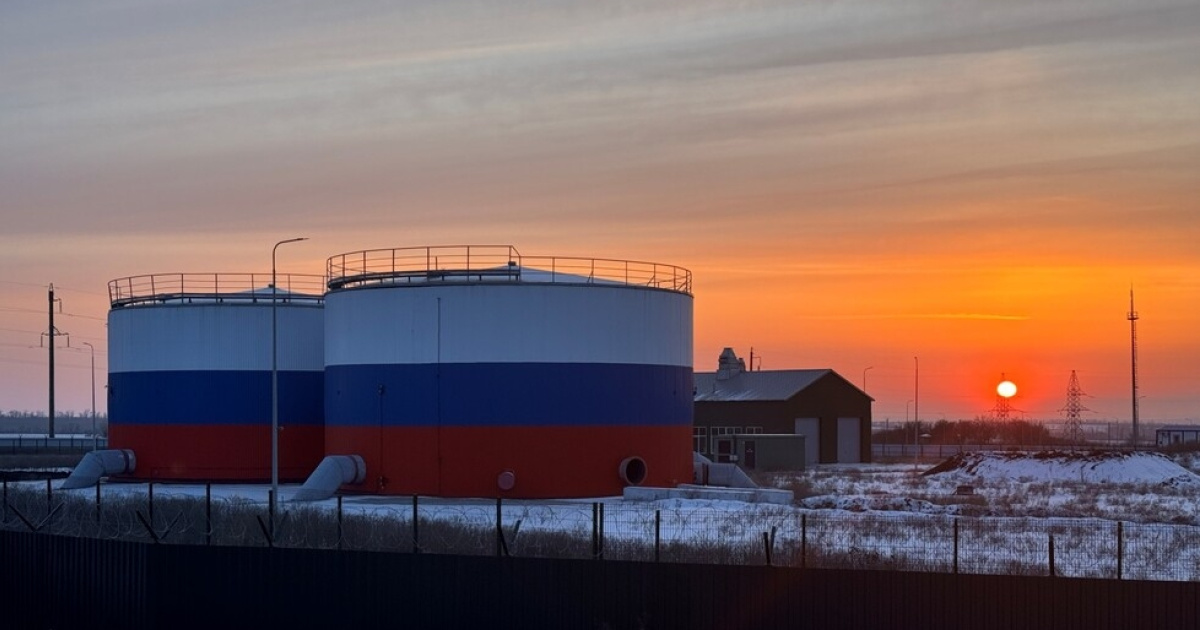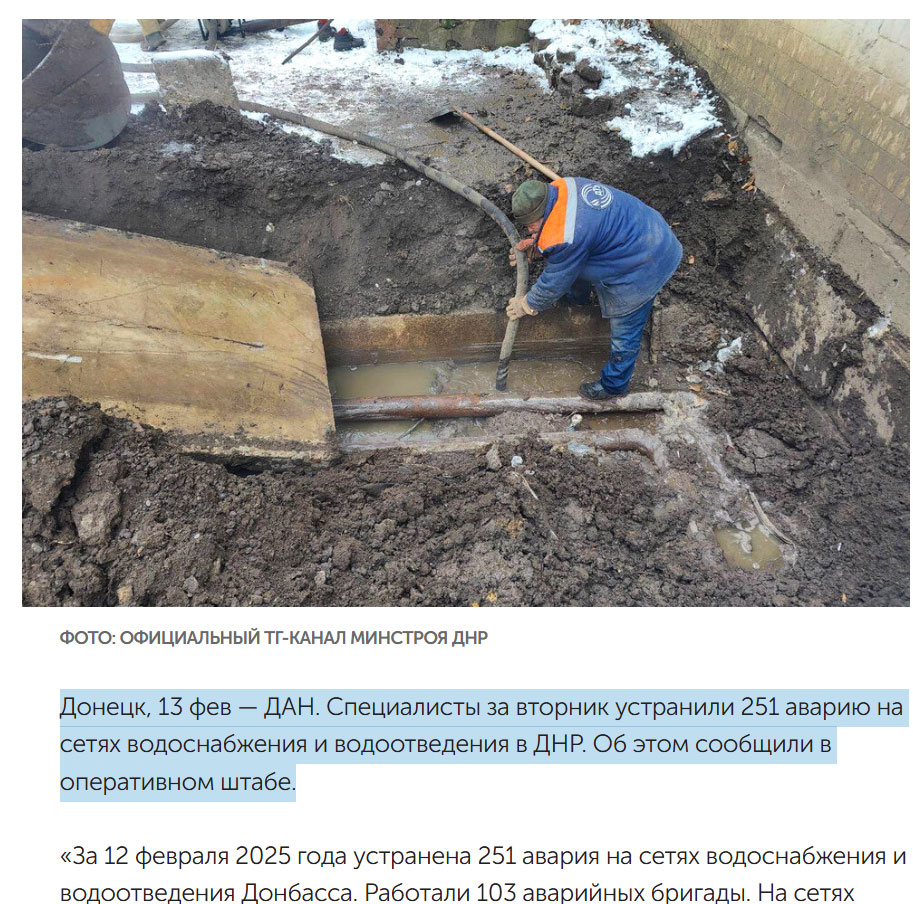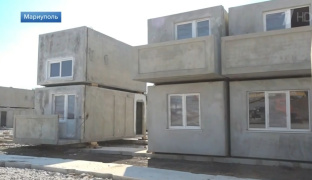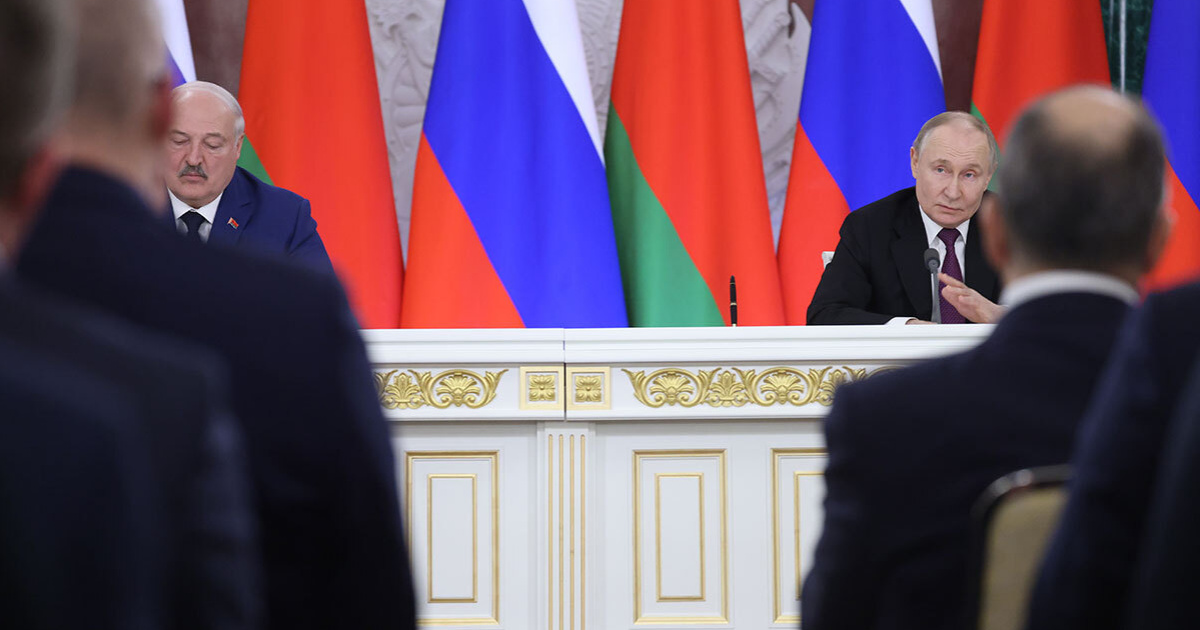
The miracle didn't happen. The water promised by the "DNR" leader Pushilin did not flow into Donetsk homes this morning.
Serious problems arose on February 11. The day before, an accident occurred on the "Don-Donbas" water pipeline, which supplied water from the russian Rostov oblast. The "republic's" authorities immediately announced a 20% reduction in water supply, although, judging by the situation in the city, the restrictions—much like weather forecasts—"felt" more like "minus 50".
Nevertheless, as early as February 12, Pushilin reported: "At the moment, welding work has been completed, the bandage installation has been finished, and the 8th pumping station has already been connected. Under favorable conditions and circumstances, by morning, we will be able to return to the pre-accident water supply level and, starting tomorrow, fully restore pre-accident water supply for all households".
Morning came, but apparently, "favorable conditions and circumstances" did not align. On the website of the "state" enterprise "Water of Donbas", Donetsk residents saw the following announcement: "Today, water supply in our city will be provided on a reduced schedule. Due to the disconnection of water supply facilities caused by unfavorable weather conditions, water will be available from 19:00 to 21:00. Please note that the water supply schedule may vary depending on reservoir levels at water distribution nodes. We apologize for the temporary inconvenience and ask for your understanding".
Water is supplied every other day for two to three hours. But even the water that does reach the pipes does not make it to the upper floors due to low pressure. On the streets, crowds of people with plastic bottles, buckets, and various containers can be seen around water delivery trucks. And this water is only technical, not potable.
At the same time, the situation varies across different parts of the city. Residents of the Budionivskyi district are in the best position. Due to its distance from the front line, it has now become an elite neibourhood. Accordingly, the water supply there is the best. Meanwhile, in the Kyivskyi, Kalininskyi, Proletarskyi, Tekstylshchyk, Petrovskyi, and the outskirts, as my source in Donetsk put it, "it's just terrible".
It should be noted that the current problems are not solely the result of a rupture in the water pipeline. The list of reasons includes the city's pipes being 85% worn out; the resulting 50% water loss in municipal networks; a dry summer that drained local reservoirs; residents deliberately draining water from heating systems; and the absence of men who previously worked in repair crews...
For illustration: "Donetsk, February 13 — DAN. Specialists repaired 251 water supply and sewage system failures in the DNR on Tuesday. This was reported by the operational headquarters". In one day! By the way, during eight years of the Minsk negotiations, no one seriously dealt with pipe replacements, hoping to hand Ukraine a city drowning in sewage as a problem after CDDLO received special status...

And the main cause of the problem is the inability to supply water through the Siverskyi Donets-Donbas canal, through which Ukraine had been supplying water to russian-occupied territories until 2022 for free (!). In fact, without solving this issue, Donetsk’s water supply will never be fully restored. Even the launch of the Don-Donbas pipeline, built by the russian military—which bursts from the slightest frost—only increased water supply by 30%. That is, while after February 2022, water was available once every three days, Rostov’s water reduced the gap between "drinking sessions" to "every other day". But only for a few hours a day. As a result, the current water supply level is 20% lower than pre-pipeline levels (according to "authorities"), but still nowhere near the pre-war level of 2022.
The occupation authorities have set a goal to reduce water losses from the current 85% to 30% by 2030. However, the pace of pipe replacement work is far behind these plans.
Repair work is being carried out by russian "patron" regions. But considering that in the Rostov oblast itself, the level of pipe wear is also around 80%...
And as long as Ukraine controls the north of the Donetsk oblast, a pre-war level of water supply in Donbas is simply impossible.
By Serhiy Harmash, editor-in-chief of OstroV




